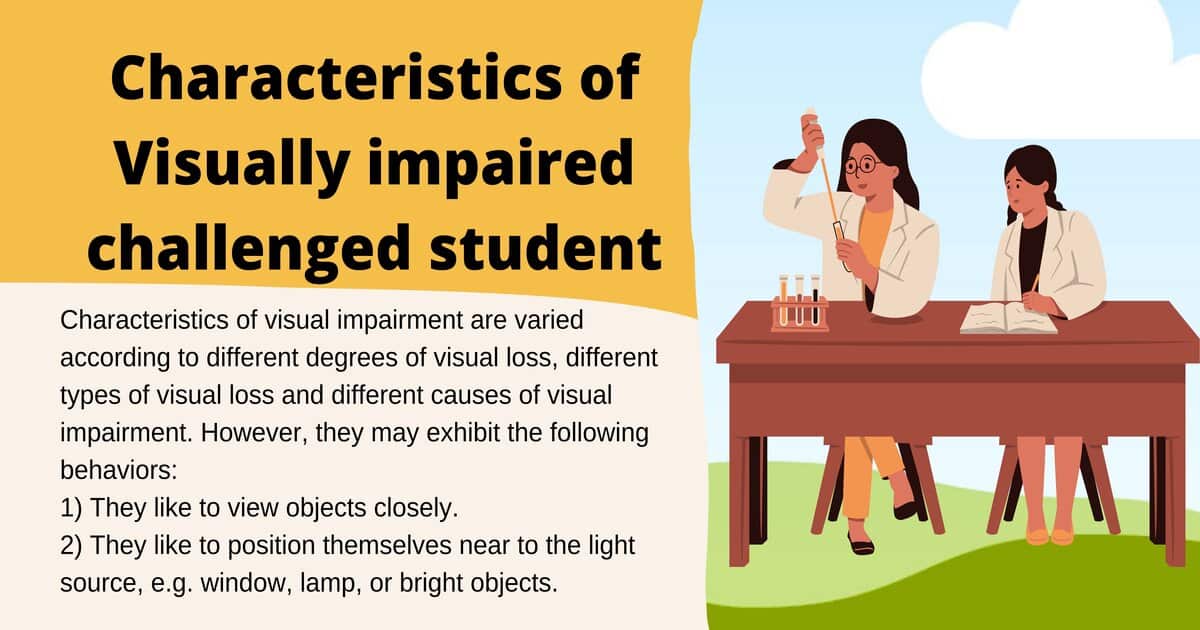Characteristics of Visually impaired challenged student
by Yuvi - November 14, 2020
Characteristics of Visually impaired / visually challenged student.
Characteristics of visual impairment are varied according to different degrees of visual loss, different types of visual loss and different causes of visual impairment. However, they may exhibit the following behaviors:
1) They like to view objects closely.
2) They like to position themselves near to the light source, e.g. window, lamp, or bright objects.
3) They find it difficult to judge the distances of objects relative to their body accurately. They lack in depth perception.
4) They tend to rely on tactual senses. They won’t use their residual vision spontaneously, and they won’t rely on visual senses alone.
5) Other characteristics: e.g. color vision problems, squint, visual field defect, accommodation problem, nystagmus and poor visual acuity, depending on the cause and effect of the visual impairment.
The objectives of the education of visually impaired children or visually challenged children are:
(1) To develop the physical, mental and social potentials of these children to the full.
(2) To develop independence, self-reliance and competence in these children.
(3) To develop life adjustment and self-care skills in these children so that they can become well-adjusted and independent individuals in society.
Teacher’s role in Teaching of hearing impaired student in class
1) Pre-teach specific language and concepts required to ensure the student has the required prior knowledge for the activity.
2) Gain the student’s attention before you give instructions.
3) Ensure that you are clearly visible to the student at all times.
4) Keep your hands and other objects away from your face while speaking.
5) Use normal clear speech.
6) Do not exaggerate your speech.
7) Avoid moving around the classroom while speaking.
8) Communicate clearly. Repeat and rephrase when necessary. Emphasize key words.
9) Use a focusing phrase e.g. “listen to this question”.
10) Check for understanding by asking the student to tell you what they need to do or repeat what they heard.
11) Use buddies to help relay and rephrase information.
12) Give students time to look at visual aids before talking to the aid so that the student with a hearing impairment or hearing disability has time to shift their attention from the visual to the auditory.
13) Use visual aids such as word webs and semantic maps and concrete examples to illustrate the links between information.
14) Provide an outline of what is to be learnt, focus on key concepts and opportunities to practice and demonstrate competence in a number of ways.
15) Increase opportunities to practice new skills and concepts – teaching a younger child demonstrating to other adults in the school; practicing on the computer with a peer.
16) Utilize available human resources – peer tutoring, teacher aides, special educators, therapy services, interpreters, notetakers.
17) Encourage class members to use sign language with the student if needed.
18) Teach routines, expectations of behavior and consequences explicitly.
19) Display routines visually using timetables or calendars of upcoming events.
20) Explain sudden changes of routine so students know what is going on around them.
21) Avoid speaking while facing the blackboard.











